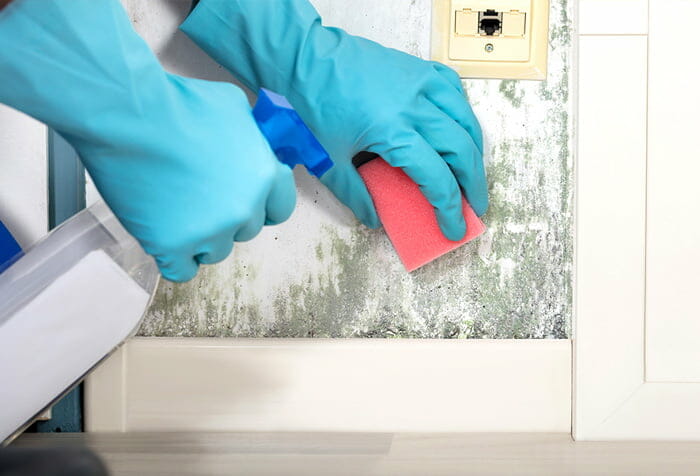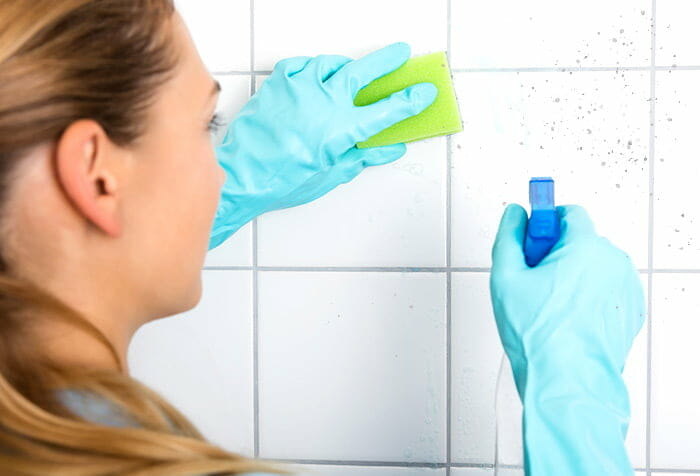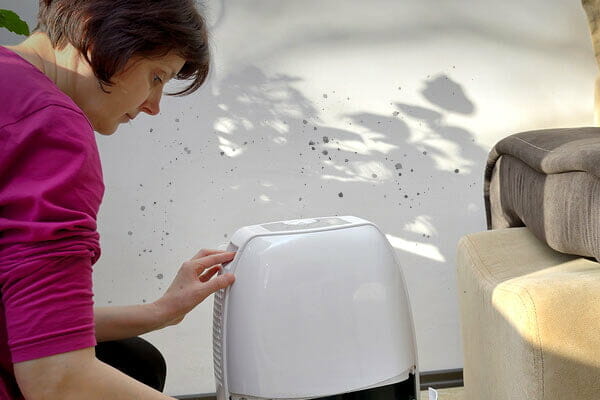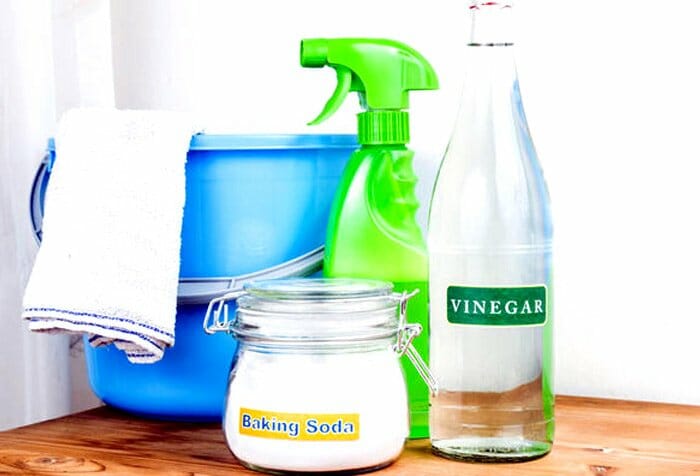
Facing off against mold in your house feels like a monster under the bed – nobody wants to deal with it! So, you’ve spotted mold in your cozy corner, now what? Do you roll up your sleeves and tackle it solo, or do the professionals need to step in? Keep reading to find a treasure trove of **bold solutions** and maybe a secret or two on how to win this battle, tailor-made for homeowners eager for a fresh, clean space.
If the moldy area you wish to remediate measures less than three feet by three feet, then you can perform the mold remediation yourself. Anything larger than this would require professional remediation.
It is possible to perform mold remediation yourself with the aid of a few common household tools and products that you very likely already own. With a little preparation (and of course the proper protective equipment!), you can safely and easily remediate small mold growths in your home or property.
Is it worth getting a professional in for mold remediation?
If you are confident that the moldy area in your home measures less than ten square feet in total – the size mandated by the Environmental Protection Agency – then you can be confident that your own remediation efforts will be effective and efficient enough for the job.
There are a few situations in which it is certainly worth engaging a professional remediator, however, which are outlined below.
The first of these is when the mold growth is larger than the ten square feet mentioned above. As well as exposing you to additional, excess mold spores, large growths of this nature are often caused by a significant underlying dampness issue. If you have a moisture or dampness problem in your home, it will need to be assessed and addressed by a professional.
The second situation in which you might need a professional remediator is when you can not see large mold growth, but suspect you may indeed have mold growing in your home. A professional remediator can inspect your home and provide a report on whether or not you need mold remediation.
Thirdly, if you have mold growing on delicate objects, such as books or silk fabrics, it may be worth engaging a professional mold remediator who specializes in this type of delicate work. They will have the proper tools and materials to ensure that your delicate belongings are treated effectively for mold while enduring minimal damage.
Which types of mold can I safely remove myself?

Many molds look the same, and without testing individual mold spores under a microscope in laboratory conditions, it is almost impossible to tell one type of mold from the other.
There are several molds that are more likely than others to grow inside your home. These include:
- Aspergillus, which can be black, green, or even yellow;
- Penicillium, which is usually white or blue in appearance;
- Cladosporium, which produces olive-green, brown, or black colonies;
- Alternaria, which can range in color from grey to black, and;
- Stachybotrys chartarum, the infamous toxic black mold.
With the exception of Stachybotrys, any of these molds should be safe to remove yourself and you don’t need to worry too much about identifying any of them before you start the removal process. But what about the ominous toxic black mold?
Luckily, Stachybotrys is pretty unlikely to grow in your home. It needs a constant, copious supply of moisture to take hold, and if you have this kind of dampness issue in your home then it’s pretty likely you will have already called in the professionals.
Will a dehumidifier help with mold remediation?
Using a dehumidifier in your home can help keep moisture levels in your property at a manageable level. This is particularly important for people who live in humid environments, or in climates that experience a periodic wet season. By keeping moisture levels low, mold is less likely to take root in your home.
If you already have mold in your home, a dehumidifier sadly won’t be much help in your remediation efforts. You will need to first and foremost remove the mold and address any significant underlying moisture issues such as leaks and floods.
Just as it is a useful tool in keeping mold at bay in the first place, a dehumidifier can be used after the remediation process to help keep mold from growing back. It is best to think of your dehumidifier as a helpful, ancillary tool for mold prevention, rather than a way to actually remove mold.

Steps to remove mold yourself
The exact method and materials you will need to use to remove mold yourself will differ depending on the location of your mold growth and the object or material that it is growing on.
Regardless of where the mold is growing inside your home, however, you will still need to take the same precautions and use personal protective equipment during the removal process. At a minimum, this personal protective equipment should include:
- Rubber gloves
- Protective eyewear
- A mask
- Sturdy, enclosed shoes
As you will be dealing with relatively small mold growth, coverings for your clothing are not necessary. It would be wise to ensure that you thoroughly wash your clothing after removing the mold, however, to ensure that your garments are not playing host to any sneaky mold spores!
Check out our step-by-step guide to removing mold from various surfaces and parts of your home below.
Removing mold from interior walls and flooring
- Mix a solution of one part dishwashing detergent, 10 parts bleach, and 20 parts water.
- Apply the bleach solution to the moldy area with a mop or sponge. Do not oversaturate the area.
- Allow the bleach solution to air dry; the detergent in the solution will help the bleach adhere to more porous surfaces such as drywall, and ensure the mold is thoroughly removed.
Removing mold from exterior home surfaces
- Cover your lawn and plants with heavy plastic sheeting before beginning any mold removal.
- Mix a solution of one cup of chlorine bleach with one gallon of water.
- Wet the moldy patch with plain water, then apply the bleach solution. You can use a garden sprayer, or power washer, or scrub the area by hand.
- Allow to air dry completely.
- Wash down any nearby plants or lawn with water.
Removing mold from tiles
- Mix a solution of one cup of bleach with one gallon of water.
- Apply the bleach solution to the moldy area using a cloth or sponge.
- Allow the bleach solution to remain on the affected area for at least 15 minutes. Reapply if necessary.
- Wipe down the treated area with water and a clean cloth and allow it to air dry.
Removing mold from fabric and furniture
- Take the moldy items to a well-ventilated area – outdoors if possible – and brush as much excess surface mold from the items as you can.
- If the fabric or material is washable, wash at the hottest recommended temperature with a disinfectant detergent.
- If the stain remains, mix a solution of oxygen bleach and water and soak the moldy material for eight hours or longer.
- If the fabric or material is not washable, remove the excess mold and take the item to the dry cleaner. They will know the appropriate products and procedures to use to remove mold from your delicate fabrics.
FAQ's
Do I need to test mold in my home before I remove it?
If you see mold in your home, the best course of action is to remove it immediately. The Environmental Protection Agency does not recommend testing for mold, as there are no acceptable ‘minimum’ levels of mold growth.
Whether you decide to engage a professional remediator or remove the mold yourself, the only thing you should be concerned about when you see mold in your home or property is removing it as soon as possible. The type of mold growing in your home is, after all, irrelevant!
Do I need any special chemicals or products to clean mold in my home?

No, you do not need any special chemicals or products to remove mold yourself. Common household cleaners such as warm water, washing detergent, and bleach are more than sufficient for removing mold growths in your home.
Sponges, mops, and cloths can be used to apply your bleach solutions. However, once you have used these cleaning tools for home mold remediation you may wish to dispose of them in order to prevent the further spread of any mold spores throughout your home.
Are there any products that I shouldn’t use to remove mold?
It is best to avoid cleaners and chemicals that are overly harsh. If you are unable to remove the mold from your home using one of the methods outlined above, you may need to call in professional mold remediators.
One thing to be cautious of when using bleach as a cleaning solution is that it should never be mixed with ammonia. The combination of bleach and ammonia causes dangerous toxic fumes that can prove more damaging than the mold itself.







